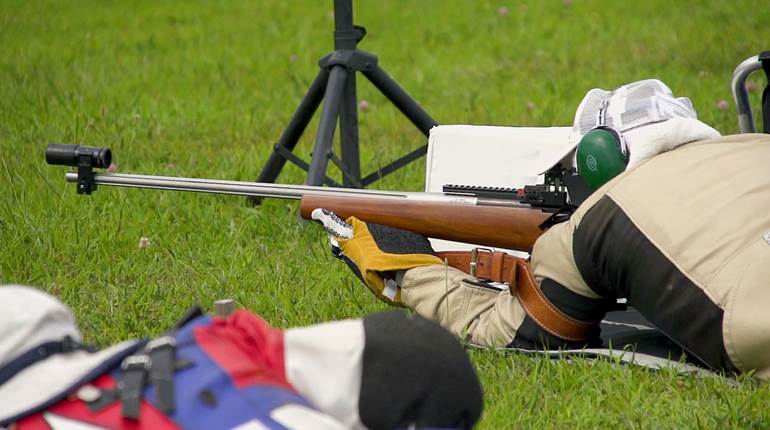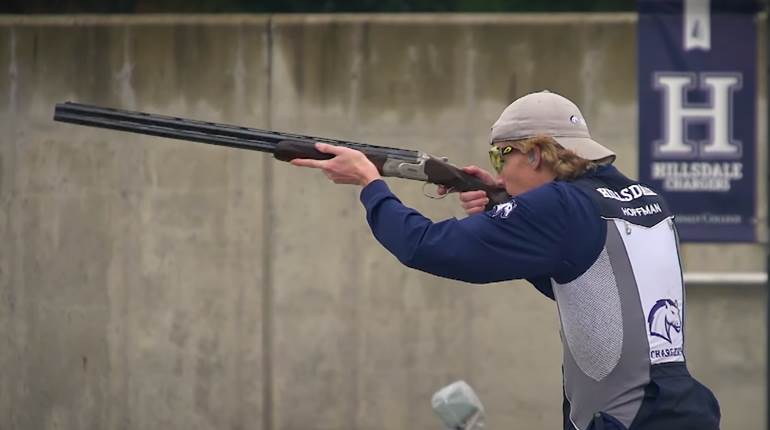The new divisions were not segregated by state, but by regiment number. Men from across the United States served together in these new groups. Some of these divisions were comprised of National Guard members from across the country as well.

One such National Guard division was the 42nd Rainbow Division, which was involved in the noteworthy Battle of Croix-Rouge Farm in July 1918. During the battle, an element of the 42nd Division was ordered to take the farm without the support of artillery or other units. The 167th Infantry Division, men from Alabama, attacked the farm with charges across an open field and suffered heavy casualties from accurate rifle and machine gun fire.

After an hour of silence, an additional 100 Alabamians from the 167th Infantry Division then began a bayonet charge on the flank of the farm, with half of the men being killed in the process. The other half made it into the farm and captured it after an intense close quarters fight. The site where the Croix-Rouge Farm stood is now the site of a memorial, commemorating the bravery of the Rainbow Division.

The U.S. Army did have a good track record and practice for marksmanship going into World War I. Though the U.S. armed forces had previously overlooked training for soldier marksmanship, the hard lessons learned during the Spanish American War pointed out the need for a more accurate army. The establishment of the NRA along with national matches and other shooting competitions bolstered the new standard for marksmanship, and accuracy increased across the board in the U.S. armed forces.

American soldiers entered the war issued with the Model 1903 Springfield bolt-action rifle chambered in .30-'06 Sprg. The M1903 was based off the Mauser 98 action and proved very accurate in the hands of a trained user. The M1903 has an adjustable rear ladder sight that, while considered fragile and geared more for a target rifle than a fighting rifle, were excellent for accurate long-range fire.

The Other rifle used by the army shortly later in the war was the Model 1917 Enfield bolt-action rifle produced by Eddystone, Winchester and Remington. Originally designed by Britain as the Pattern 14, the design was being produced by the manufacturers for the British under contract. The design was converted to .30-'06 Sprg. and adopted as the Model 1917 to fill the need for rifles, with there being less than 850,000 M1903s produced at the time of America's entry to war. The Sidearms used included the M1911 semi-automatic handgun along with Smith & Wesson and Colt .45 ACP revolvers.

Machine guns, on the other hand did not receive the same focus by the army early on with, only 300 machine guns in use by when the United States entered the war. In 1917 the army was still using with the John Moses Browning designed Colt M1895 "Potato Digger" early gas-operated machine gun, which used a large swinging-action arm under the barrel to drive the bolt, giving it the nickname. The M1895 was an antiquated design by the time America entered the war and was inferior to newer designs being used at the time like the Maxim machine gun.

The U.S. Army had also adopted the French designed Hockiss M1909 "Benet-Mercie" light machine gun chambered in .30-'06 Sprg. The M1909 fed from a non-flexible ammunition strip, but was not ideal for the conditions of trench warfare and was also an antiquated design by the time of American involvement. The Maxim 1904 heavy machine gun was also in inventory, but the army only had a few. Machine guns at the time were expensive to produce and funding was not an option under the tight budgeting before the war. The army would toy with machine gun designs but never buy in mass.

However, the reality of combat on the Western Front changed American perspectives on the importance of machine guns, which became a necessity. The army replaced nearly all domestic weapons then in inventory with existing foreign made machine guns when the American Expeditionary Force arrived in France. American troops began using large numbers of weapons like the French M1915 Chauchat CSRG light machine gun chambered in 8 mm Lebel and the Maxim based British Vickers belt-fed heavy machine guns chambered in .303 British. The Chauchat was a select-fire automatic rifle that fired from the open bolt and fed from a detachable magazine.

The light weight compared to standard heavy machine guns like the Vickers meant that the Chauchat could be carried and operated by a single man and move with infantry to provide supporting fire. The Chauchat was used effectively by American soldiers, with an example being the actions of Cpl. Sydney Manning of the 167th Infantry Regiment in July, 1918.
After the Battle of Croix-Rouge Farm, American forces began to attack German positions across the Ourcp River, which were atop high embankments. During the assault, Cpl. Manning took command of the remnants of his savaged platoon after a large number of men along with the officers were killed, leaving only 35 men. Cpl. Manning took lead of the remaining men and lead a charge part of the German defensive position. After taking a part of the German position, Cpl. Manning held off swarms of German infantry with his Chauchat, being wounded nine times throughout the fight. For his actions, Cpl. Manning was awarded the Medal of Honor.
To watch complete segments of past episodes of American Rifleman TV, go to americanrifleman.org/artv. For all-new episodes of ARTV, tune in Wednesday nights to Outdoor Channel 8:30 p.m. and 11:30 p.m. EST.











![Winchester Comm[94]](/media/1mleusmd/winchester-comm-94.jpg?anchor=center&mode=crop&width=770&height=430&rnd=134090756537800000&quality=60)
![Winchester Comm[94]](/media/1mleusmd/winchester-comm-94.jpg?anchor=center&mode=crop&width=150&height=150&rnd=134090756537800000&quality=60)











